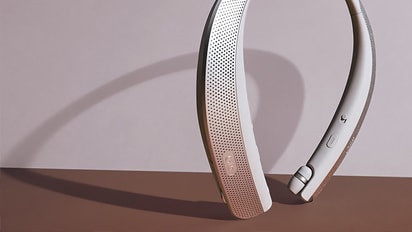Try this
Phoenix BIOS model
※ In the case of SSD-installed laptops, which boot up very quickly, be sure to press the [F2] key on the keyboard as soon as the system is powered up.
If you cannot enter BIOS on the first attempt, try multiple times.
2. Using the directional keys on the keyboard, move to the [Boot] tab.
3. Navigate through the devices listed under [Boot Priority Order] using the directional keys and press the [F5] key to move a device up, and the [F6] key to move a device down on the list.
Moving devices up and down changes the boot priority sequence of the system.
4. When booting from a USB drive, go to [Security] - [Secure Boot Configuration] -[Secure Boot Option] and switch from [Enable] to [Disable].
5. Press the F10 key on the keyboard to Save & Exit.
InsydeH20 BIOS model
※ In the case of SSD-installed laptops, which boot up very quickly, be sure to press the [F2] key on the keyboard as soon as the system is powered up.
If you cannot enter BIOS on the first attempt, try multiple times.
2. Using the directional keys on the keyboard, enter [Boot] - [Boot Type Order].
Navigate through the boot order using the directional keys and press the [F5] key to move a device up, and the [F6] key to move a device down on the list.
Moving a device up and down changes the boot priority order of the system.
3. When booting from a USB drive, go to [Security] - [Secure Boot Configuration] -[Secure Boot Option] and switch from [Enable] to [Disable].
4. Press the F10 key on the keyboard to Save & Exit.
Ami BIOS model
If you cannot enter BIOS on the first attempt, try multiple times.
2. Using the directional keys on the keyboard, move to the [Boot] tab.
3. Navigate through the devices listed under [Boot Priority Order] using the directional keys.
Press the [F5] key to move a device up, and the [F6] key to move a device down on the list.
Moving a device up and down changes the boot priority order of the system.
4. If you are booting from a USB drive, go to [Security] -[Secure Boot] and switch [Enable] to [Disable].
5. Press the F10 key on the keyboard to Save & Exit.
Graphics setup model
2. Click on the [Boot] menu.
3. Change the boot order by using a mouse or touch pad to drag and drop the device icons.
4. Press [F10] to Save & Exit.
Selecting and using a boot device
1. Insert a boot device (USB or CDROM) and turn on the power. Right afterwards, press the [F10] key multiple times.
2. After a moment, when the Boot Menu appears, select the desired device.
3. The PC will be booted from the selected device.
For UEFI BIOS models: If the boot device does not appear in the [Boot Menu] or if the PC cannot be booted from the device
Incorrectly adjusting the BIOS settings may lead to boot failures or even system malfunctions.
This guide was created for all models, so the images or content may be different from your product.












